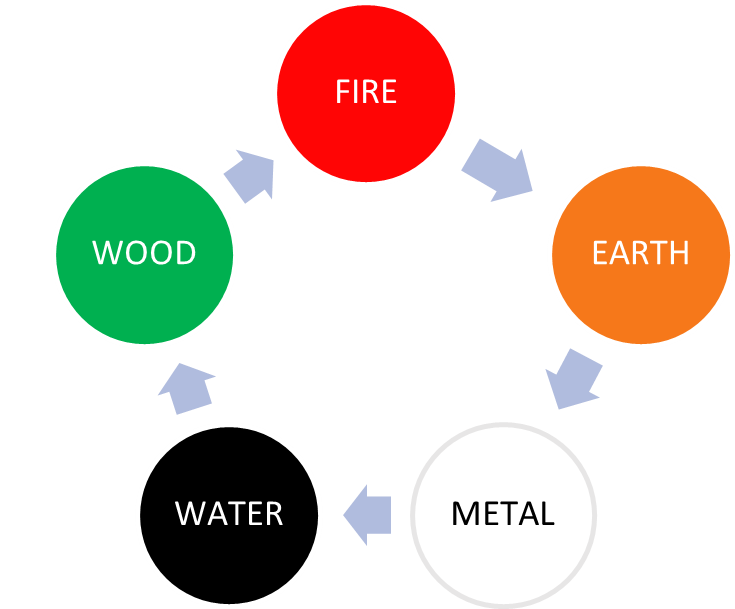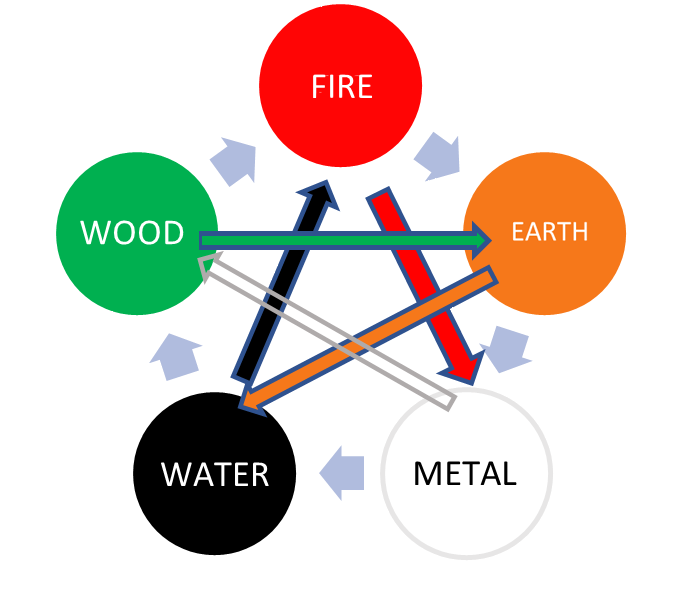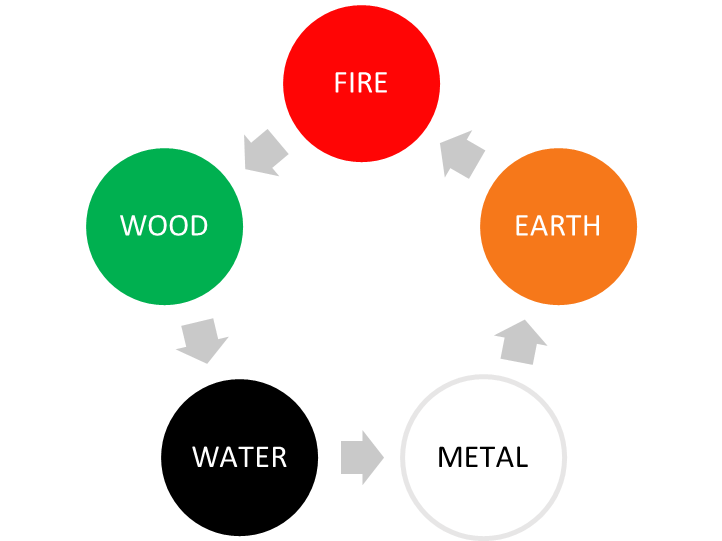There are five elements (wu xing) that are fundamental: wood, fire, earth, metal and water. Each symbolizes a trend, a pattern of action resulting from the analysis of their nature:
1) wood (mu) – characterizes something that grows and flourishes freely;
2) fire (huo) – characterizes something that is hot and has an upward pattern;
3) earth (tu) – describes anything that supports growth, nourishes;
4) metal (jin) – specific to something that has a descending and clarifying character;
5) water (shui) – specific to something that moistens, cools and flows downward.
The features of the five elements can be seen in all matters and phenomena. For example:
– seasons: spring – wood, summer – fire, late summer – earth, autumn – metal, winter – water
– directions: east – wood, south – fire, center – earth, west – metal, north- water
– colors: green – wood, red – fire, yellow – earth, white – metal, black – water
– emotions: anger – wood, joy – fire, pensiveness – earth, sadness – metal, fear – water
– flavors: sour – wood, bitter – fire, sweet – earth, pungent – metal, salty – water
The theory of the five elements is used not only to categorize matters and phenomena, but also to explain the relationships and the equilibrium between them, as well as the consequences occurring when the equilibrium breaks down.
There are two mutual relationships between the five elements, without which birth and development, and maintaining the equilibrium would not be possible:
– promotion – the elements generate and support one another: wood promotes fire, fire promotes earth, earth promotes metal, metal promotes water, and water promotes wood;
and
– restriction – the elements control one another: wood restricts earth, earth restricts water, water restricts fire, fire restricts metal, and metal restricts wood.
PROMOTION CYCLE

RESTRICTION CYCLE

Whenever these normal promotion and restriction relationships are disrupted, the following occurs:
– excessive control (subjugation) – when one element exerts excessive restriction over another one and weakens it (e.g. water subjugates fire)
or
– reverse restriction – when one element is too weak and cannot control the other (g. fire counter restricts water)
REVERSE RESTRICTION



